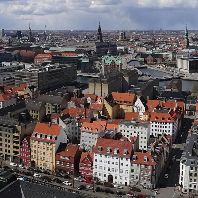Skanska AB has invested a total of 155 million in the Polish office property market over the last two years. Skanska Property Poland is currently working on five office projects in Poland, including two in Warsaw and three on regional markets. This means that the company has now 116,000 m² of new office space under construction. All the projects are built according to the principles of sustainable development and are LEED certified.
"Skanska as a global company sees the growing potential of Central and Eastern Europe. Our focus on Poland in times of global economic volatility confirms our confidence in this market. As Skanska invests full equity in our developments, we enjoy the advantage of being able to benefit from our financial strength and starting new projects against the cycle.
"Therefore, we launched seven new projects in the CEE last year, including five in Poland, with a total of 146,000 m², and we intend to launch seven new projects in 2012 in the region, which will deliver approximately 100,000 m² of new office space," said Nicklas Lindberg, President of Skanska Commercial Development Europe.
Deep Green
At the end of 2011 Skanska started construction of its flagship project Atrium 1, which is being developed at the ONZ Roundabout in Warsaw. This A-class building offering 18,000 m² of office space will feature exceptionally ambitious green solutions, which have not been applied on the Polish market so far.
Furthermore, some of them will be so innovative that they are used in only a handful of office buildings in Europe. This particularly refers to the geothermal cooling and heating system, which operates without a heat pump. Atrium 1 will be the first Deep Green building in Central and Eastern Europe.
According to its Color Palette, this is how Skanska refers to buildings with nearly zero impact on the natural environment. This ambitious goal will be achieved by applying a wide range of innovative solutions. Atrium 1 will have a double-skin facade with external blinds, preventing the building from excessive heating up by sun rays and additionally triple pane windows will limit heat loss in winter.
Energy efficient lighting system comprising LED lighting and motion sensors in common areas, as well as the daylight control system, adjusting light intensity to the amount of light coming in from the outside, have been designed to significantly reduce energy consumption.
At the same time the use of grey water (after washing hands or showering) to flush toilets, waterless urinals, water-saving fittings and toilets will decrease the consumption of drinking water. Furthermore, photovoltaic panels will be installed in the building to produce electric energy, which will be additionally obtained from renewable energy sources.
Innovative, energy efficient solutions will also be applied in the Green Corner complex, currently under construction in Warsaw with a total leasable space of 27,000 m². Like Atrium 1, the scheme has already been LEED pre-certified with the highest Platinum rating.
Skanska invests in regional cities
Skanska also believes in the strength of regional cities, where the developer's other projects are now under construction. The company is linked by several investments to Wroclaw, where construction on the Green Towers complex with 23,100 m² of modern office space is currently underway. In December 2011 Skanska also launched its first project in Poznan Malta House, developed on the shore of Malta Lake, in the city center.
A further regional office project of Skanska is Green Horizon in Lodz, whose first phase has already been 97% leased. All these buildings have been LEED pre-certified, which confirms that they are built according to the principles of sustainable development and their tenants may expect not only comfortable working conditions, but also reduction of operating costs of the buildings they will occupy.
"2012 will be very intensive for us we are currently working on five projects, four of which were launched in 2011. Three of th















